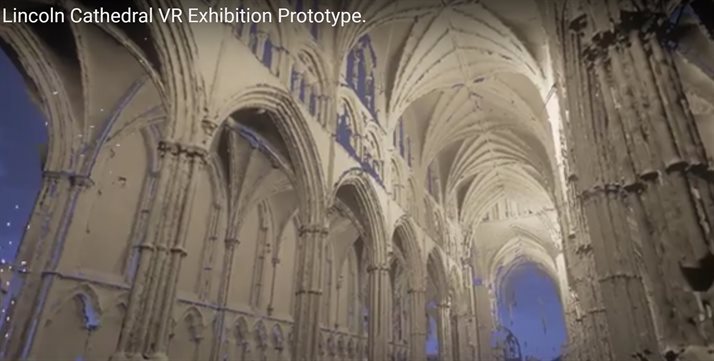Digital Heritage

Projects
2022-2024: DOCUMENTING THE HERITAGE CHURCHES OF CHILOÉ: THE RECORD AS A KNOWLEDGE TRANSFER FOR CONSERVATION
This project aims to document heritage churches in Chiloé, Chile, some of which were added to the UNESCO World Heritage List in 2000 as a unique example of religious architecture in Latin America, representing an architectural tradition begun by the Jesuit itinerant preachers in the 17th and 18th centuries.
Project team: Dr Bernadette Devilat and Dr Felipe Lanuza from the University of Nottingham; Dr Umberto Bonomo and Santiago Bernales, from Centro del Patrimonio Cultural, Pontificia Universidad Católica de Chile (CENPUC); Natalia Cruz from Fundación Iglesias de Chiloé; and Professor Lorenzo Berg, from Universidad de Chile. Supported by: Professor Gamal Abdelmonem from CAUGH NTU.
Funder: EWAP Oxford Brookes, Arcadia, NTU.
Website: www.churchesofchiloe.com

Aerial view of the church of Vilupulli, in Chiloé, Chile, 2023. Image created by B. Devilat, based on 3D laser scanning data captured on-site by her, F. Lanuza & A. Morales.
2023-2024: APPLICABILITY AND SCALABILITY OF A SUSTAINABLE RE-CONSTRUCTION FRAMEWORK FOR SEISMIC-PRONE HERITAGE AREAS OF GUJARAT, INDIA
This follow-on project aims to actively engage with authorities and local stakeholders by exploring ways to implement the framework proposed in the previous research, to increase the impact of its outcomes and to test its wider applicability and regional application.
Project team: Dr Bernadette Devilat (Principal Investigator) and Dr Felipe Lanuza (Co-Investigator, Co-I) from the University of Nottingham; Prof Gamal Abdelmonem (Co-I), Director of the Center for Architecture, Urbanism and Global Heritage (CAUGH) at Nottingham Trent University (NTU); Dr Jigna Desai (Co-I), Mrudula Mane and Nigar Shaikh (Research Associates) and Saatvika Pancholi (Research Assistant) from the Center for Heritage Conservation CEPT Research and Development Foundation. As Project Partners: Aditya Singh from the Hunnarshala Foundation and Shubham Daberao from the Gujarat Institute of Disaster Management.
Funder: Arts and Humanities Research Council (AHRC) and Department for Culture Media and Sports (DCMS).
Website: www.3d4heritageindia.com

Aerial view of the birdfeeder building (Chabutra) at Bela, in Gujarat, India, 2021. Image created by B. Devilat and F. Lanuza, based on 3D laser scanning data captured on-site by M. Mane and Z. Pithawalla, with the support of A. Singh, J. Desai, S. Sen and T. Choudhari.
Digital Exhibition of Lincoln Cathedral
The University of Nottingham has been awarded a Digital Project Grant by Paul Mellon Centre for Studies in British Art. The grant will go towards the Lincoln Cathedral Interactive Digital Exhibition project, which utilises the interdisciplinary experience of the team at the University of Nottingham and explores a cost efficient way to create an interactive digital exhibition of Lincoln Cathedral, combining TLS data and architectural storytelling. A collaboration between Dr Lukasz Bonenberg, from Nottingham Geospatial Institute, and Dr Chantelle Niblock and Dr Laura Hanks from the department of Architecture and Built Environment, University of Nottingham.
Watch a prototype of the interactive digital exhibition, created by MArch student Yuqiang Ben

Paul Mellon Centre – Augmented Reality Interactive app
Working closely with the Lincoln Cathedral we have launched a cross platform application with Hotknife. We have created several laser scans of the exterior and interior of the cathedral and Hot Knife have developed techniques to deliver these scans in 360 video format that plays through the mobile application. The app’ tells the story of different aspects of the cathedral and the video – both standard and 360 video immerse the viewer and show perspectives of the cathedral that viewer wouldn’t be able to reach without technology.
Augmented reality brings new ways to explore the hidden architecture by visualing a three dimensional model in front of the viewer, allowing them to swipe a cross section through the model.
Download the app

Virtual Reality headset used to explore digital exhibition of Lincoln Cathedral